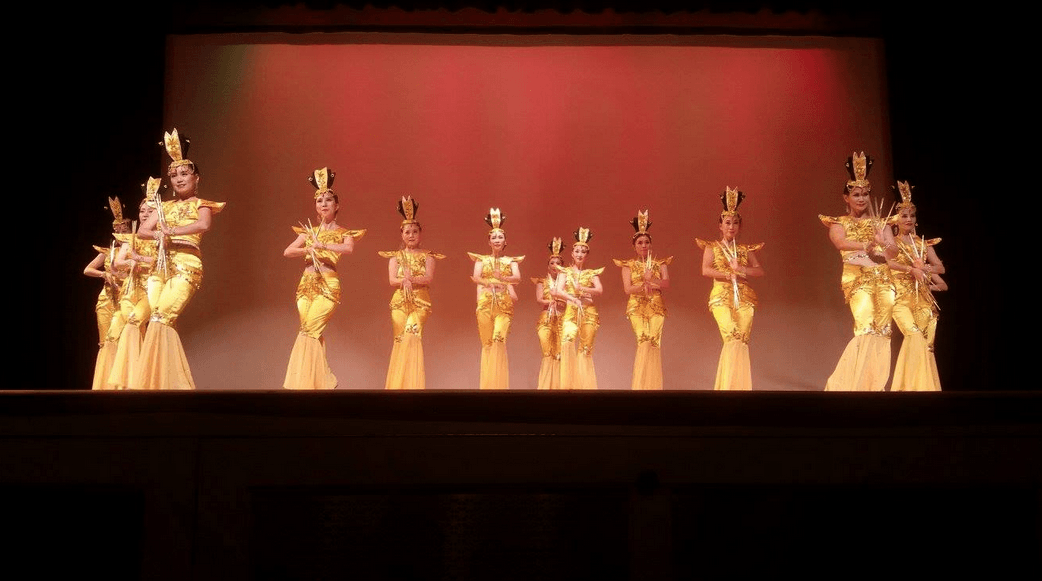Hope Chinese School Dance Mom Team kicks of Asian Cultural Celebration
3 min read
Julianna Saracho
By DELLA HETHCOX
Dodd Auditorium stage was bathed in colorful lights on Oct. 25 as keynote performers, the Hope Chinese School Mom Dance Team, danced and sang to their audience for.
Their two-hour performance was just one of the events during the week-long celebration hosted by the James Farmer Multicultural Center to celebrate Asian-American culture and history. Marion Sanford, Center Director, introduced the event, calling it an experience that celebrates “the fusion of the East and the West.”
The Asian Student Association has worked in conjunction with the Center to provide a variety of events to help educate the student body and spread awareness about Asian-American culture, not only on campus, but also throughout the U.S.
Representing UMW’s ASA was co-president, Jessica Wu, senior business administration major, who introduced the event alongside Sanford.
According to Wu, the event was a collaboration between the Center, the ASA and Chinese Professor Hongbo Tang.
Professor Tang previously knew of the Chinese dancers, and was the one who suggested they be candidates for the keynote performers. Judging from the large amount of attendees, her suggestion was well received by the local community.
The Hope Chinese School Mom Dance Team is a troupe based in Washington, D.C., comprised of more than 100 active members. Founded in 2000 by dance choreographer and instructor, Xiao-qin Zheng, the group started with 16 members who wanted to connect with their community. Over the past few years, the group has expanded and performs across the metro area.
“What’s unique about this group is that not only are we full-time moms, but also, most of us are full-time professionals. We carve out time to practice and perform. It’s the common interest that brings us together,” Dana Wang said in a press release from University Relations.
According to Tang, the group has been practicing their routines for the past three months. The show was packed with intricate group choreography, passionate solos and traditional Chinese songs. Despite the large number of performers during several routines, the teamwork and friendship between these women was evident. Even when a mistake was made, they would smile and carry on, delighting the audience with each carefully executed movement.
They performed some of their most popular dances such as the Tibetan Dance, Red Ribbon, Good Life, Yellow Mountain and the Same Song.
The opening dance proved to be the most spectacular piece of the evening. Dressed from head to toe in yellow and gold costumes, complete with bejeweled headpieces, the multitude of dancers shimmered and spun on and off the stage. It was meant to mimic the mystical culture found along the Silk Road.
The crowd became incredibly energetic and participatory during the solo belly dance routine, clapping and whistling their appreciation. More subtle performances, such as a Mongolian inspired dance, highlighted the free- spiritedness of that Chinese ethnic minority.
Serving as entertainment during the numerous costume changes, five Chinese songs were sung. These songs emphasized important symbols in traditional Chinese culture and arts, such as the moon, the peony flower or the Silk Road.
The evening concluded with a dance choreographed around the Chinese New Year, which the announcer described as being a combination of American Easter, Thanksgiving and Christmas all rolled into one giant festival. The color red, which symbolizes good luck in Chinese culture, was featured prominently in their costumes and props.
For the ASA presidents, bringing acts like the dance team to campus gives students an introduction to Asian culture, as well as a different perspective, according to co-president Soo Hyun Lee, senior biology and chemistry major. “You don’t get to see these types of events if you don’t live in D.C.,” Lee said.
Their favorite part about the weeklong celebration? The keynote performance and of course, the Taste of Asia on Oct. 30. Interested in attending the event? Tickets cost $3 for students, or you can bring a donation of three canned foods in lieu of money.
The ASA meets biweekly on Wednesdays at 5 p.m. in Monroe 112. Follow their Facebook page, UMW Asian Student Association, for updates.


